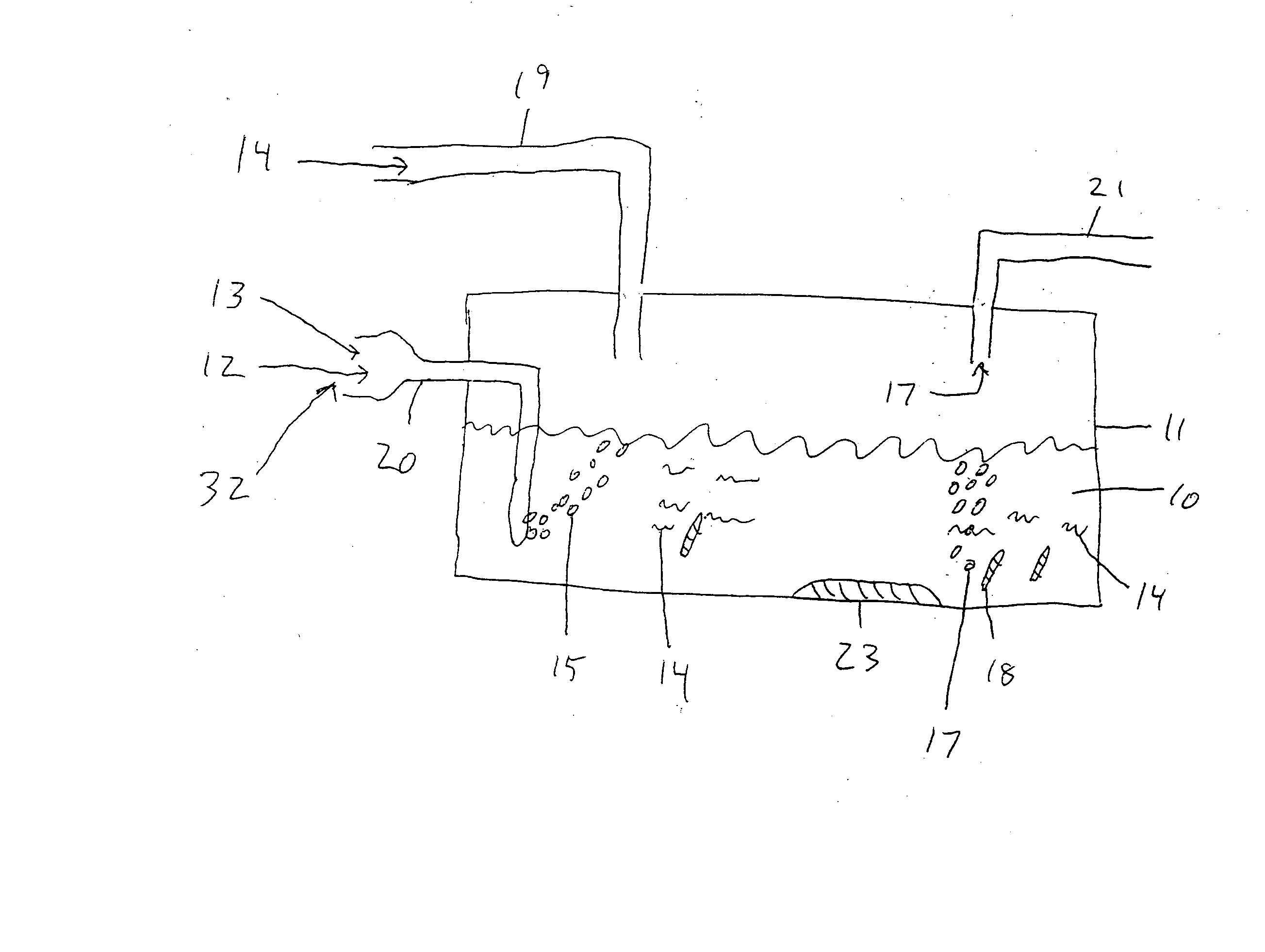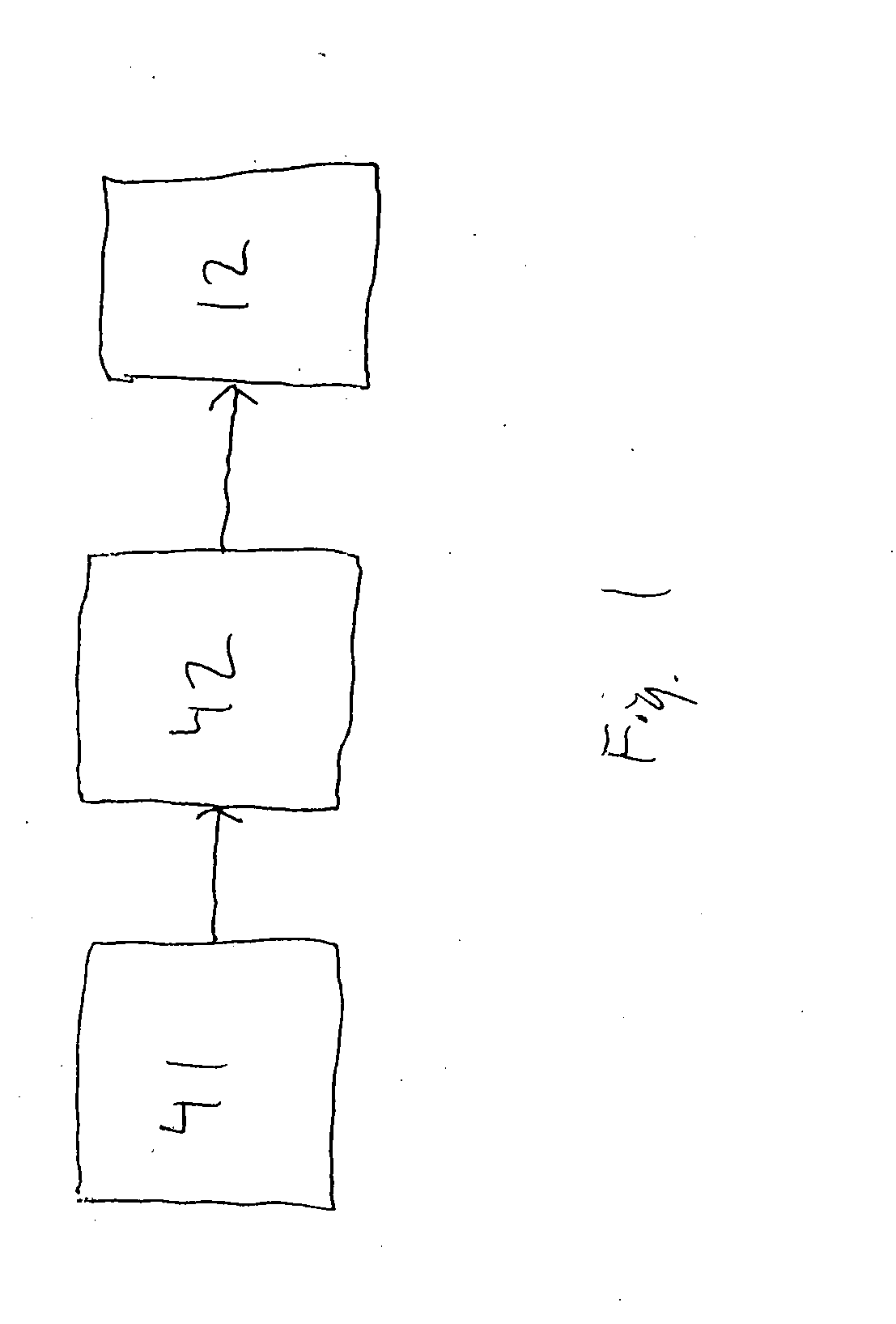Bio-recycling of carbon dioxide emitted from power plants
a technology of carbon dioxide and power plants, applied in biomass after-treatment, waste based fuel, biofuels, etc., can solve the problems of methane and carbon dioxide, two fermentation products cannot be further fermented, etc., and achieve the effect of enhancing the production of biogas methan
- Summary
- Abstract
- Description
- Claims
- Application Information
AI Technical Summary
Benefits of technology
Problems solved by technology
Method used
Image
Examples
example 1
Comparison of Biogas Production in Batch Mode in Cultures Sparged with CO2 Vs. N2
[0071] Four 6-gallon carboys are used. Each carboy contains 6 L of distilled water and 48 g of dried nutrient broth (Difco Laboratories Part #0003-17-8, Bacto Beef Extract / Bacto Peptone). The dried nutrient broth is allowed to dissolve overnight without stirring or heating. After 14 hours, 4.2 g of magnetite, 1 mL of ATCC 55339 innoculant (cultured in NBY medium, ATCC medium 815 anaerobically at 25° C.) and 100 g of spent dairy manure from a methane-producing anaerobic reactor is added.
[0072] The reactor design is shown in FIG. 5. Carboy or digester 11 contains liquid phase fermentation mixture 10 and a gas phase head space 43. CO2 or N2 sparges the liquid phase 10 through gas sparging tube 20. A sealed clamp 44 is used to seal off the sparging tube 20 after gas sparging is completed. Gas can be collected through a gas sample port 21. The gas passing through port 21 is collected in a Tedlar gas sample...
example 2
Continuous Addition of CO2
[0077] Anaerobic digestion mixtures in four carboys are set up as described in Example 1 with nitrogen head space. Dissolved CO2 is measured in the liquid phase with a Orion5-Star 1119000 carbon dioxide electrode from Thermo Scientific and Orion instruments. When significant biogas production is observed to begin, the dissolved CO2 concentration is measured in the carboys. Digestion is allowed to continue in two control carboys without any gas sparging. In the other two carboys, pure anaerobic CO2 is sparged into the liquid mixture at a rate sufficient to increase the dissolved CO2 concentration at least 5 mM above the dissolved concentration in the control digesters. The pH is monitored in all four carboys, and acid or base is added as needed to maintain a pH in the range of 6.8 to 8.0. Biogas produced in all four carboys is collected throughout the digestion and the composition of the biogas is measured to determine total methane produced. Digestion is c...
PUM
 Login to View More
Login to View More Abstract
Description
Claims
Application Information
 Login to View More
Login to View More - R&D
- Intellectual Property
- Life Sciences
- Materials
- Tech Scout
- Unparalleled Data Quality
- Higher Quality Content
- 60% Fewer Hallucinations
Browse by: Latest US Patents, China's latest patents, Technical Efficacy Thesaurus, Application Domain, Technology Topic, Popular Technical Reports.
© 2025 PatSnap. All rights reserved.Legal|Privacy policy|Modern Slavery Act Transparency Statement|Sitemap|About US| Contact US: help@patsnap.com



